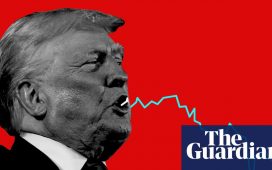
© Reuters. A worker wearing a face mask works on a production line manufacturing bicycle steel rim at a factory, as the country is hit by the novel coronavirus outbreak, in Hangzhou, Zhejiang province, China March 2, 2020. China Daily via REUTERS/File Photo
2/2
By Liangping Gao and Kevin Yao
BEIJING (Reuters) -China’s manufacturing activity shrank for a third straight month in December and weakened more than expected, clouding the outlook for the country’s economic recovery and raising the case for fresh stimulus measures in the new year.
The government has in recent months introduced a series of policies to shore up a feeble post-pandemic recovery, which is being held back by a severe property slump, local government debt risks and soft global demand. But the world’s second-largest economy is still struggling to gain traction.
The official purchasing managers’ index (PMI) fell to 49.0 in December from 49.4 the previous month, an official factory survey showed on Sunday, below the 50-mark separating growth from contraction and weaker than a median forecast of 49.5 in a Reuters poll.
“We must step up policy support, otherwise the trend of slowing growth will continue,” said Nie Wen, an economist at Hwabao Trust. Nie expects the central bank to cut interest rates and banks’ reserve requirement ratios (RRR) in the coming weeks.
“Falling prices have greatly affected companies’ profits and further affected people’s employment and incomes. We may see a vicious cycle,” he said.
China’s central bank said on Thursday it would step up policy adjustments to support the economy and promote a rebound in prices, amid signs of rising deflationary pressures.
Earlier this month, top Chinese leaders at a key meeting to chart the economic course for 2024 pledged to take more steps to support the recovery next year.
Five of China’s largest state banks lowered interest rates on some deposits on Dec. 22, the third round of such cuts this year, which could help the central bank move toward easing monetary policy.
The government, which in October unveiled plans to issue 1 trillion yuan ($140.89 billion) in sovereign bonds to fund investment projects, is likely to focus on more fiscal steps to support growth next year, analysts said.
WEAK DEMAND
China’s consumer prices fell the fastest in three years in November while factory-gate deflation deepened, weighed by weak domestic demand.
“The current external environment is increasingly complex, severe, and uncertain,” the statistical bureau said.
“Some companies in the survey reported that reduced overseas orders and insufficient domestic effective demand are the main difficulties faced by the companies.”
The new orders sub-index was at 48.7, contracting for the third month, according to the PMI survey released by the National Bureau of Statistics.
Weak external demand also remained a major drag on factory activity, with new export orders index registering 45.8 in December, contracting for the ninth straight month.
The sub-index of factory gate prices was at 47.7, contracting for a third straight month, adding to signs of deflation and pressure on business profits.
The official non-manufacturing purchasing managers’ index (PMI), which includes services and construction, rose to 50.4 from 50.2 in November, supported by a recovery in the vast services sector.
China’s economic growth is seen on track to hit the official target of around 5% this year and Beijing is expected to maintain the target next year.
($1 = 7.0978 renminbi)









